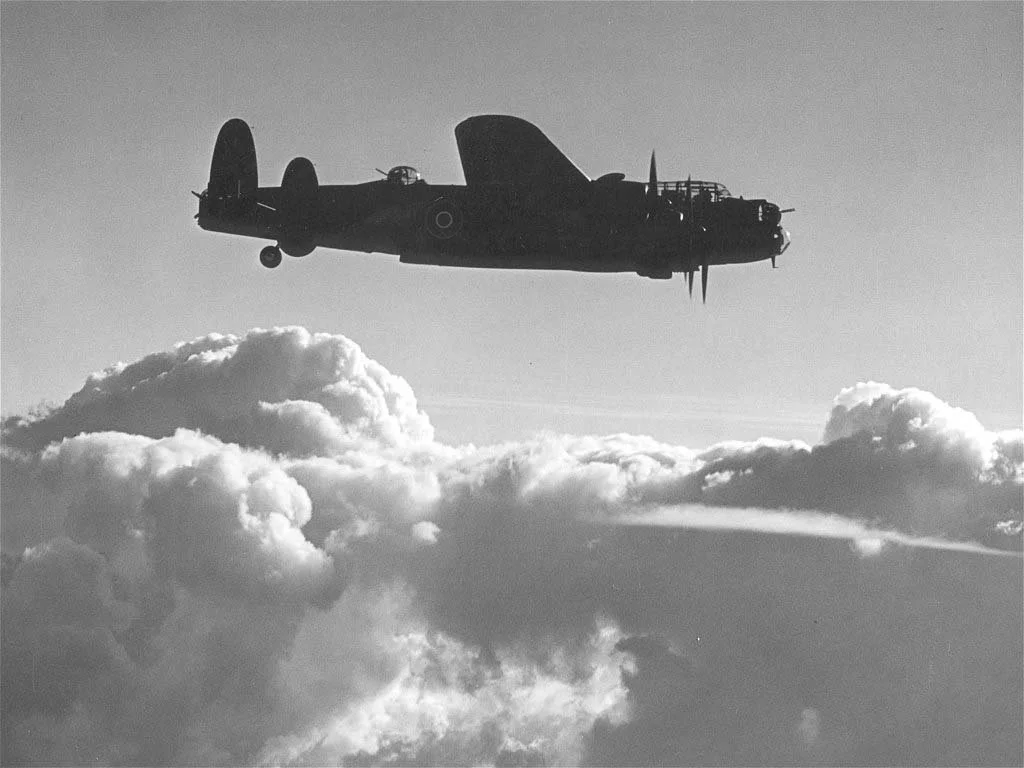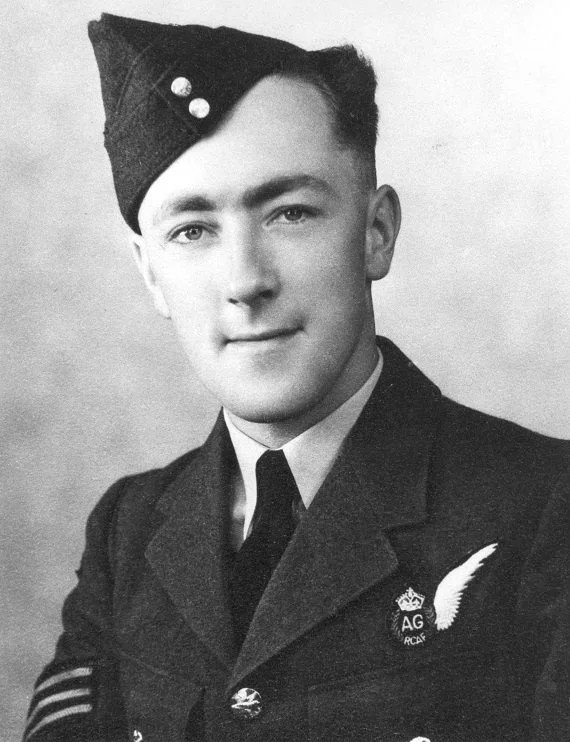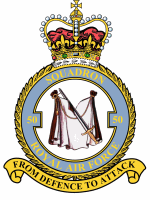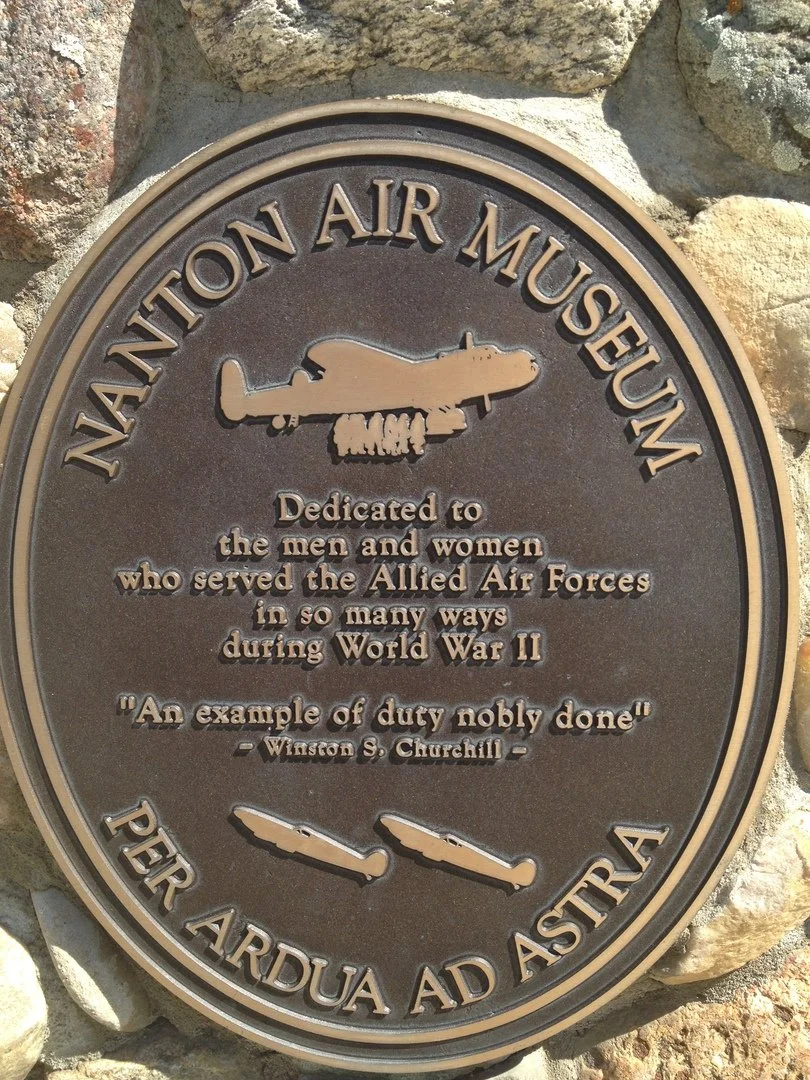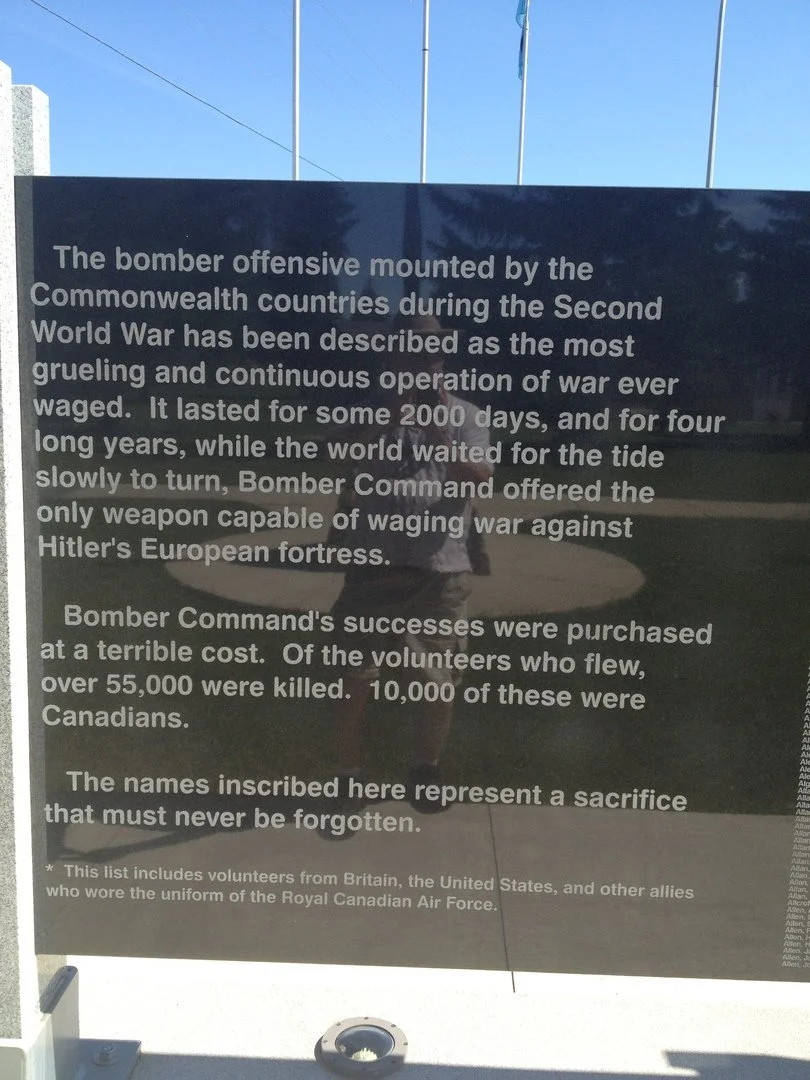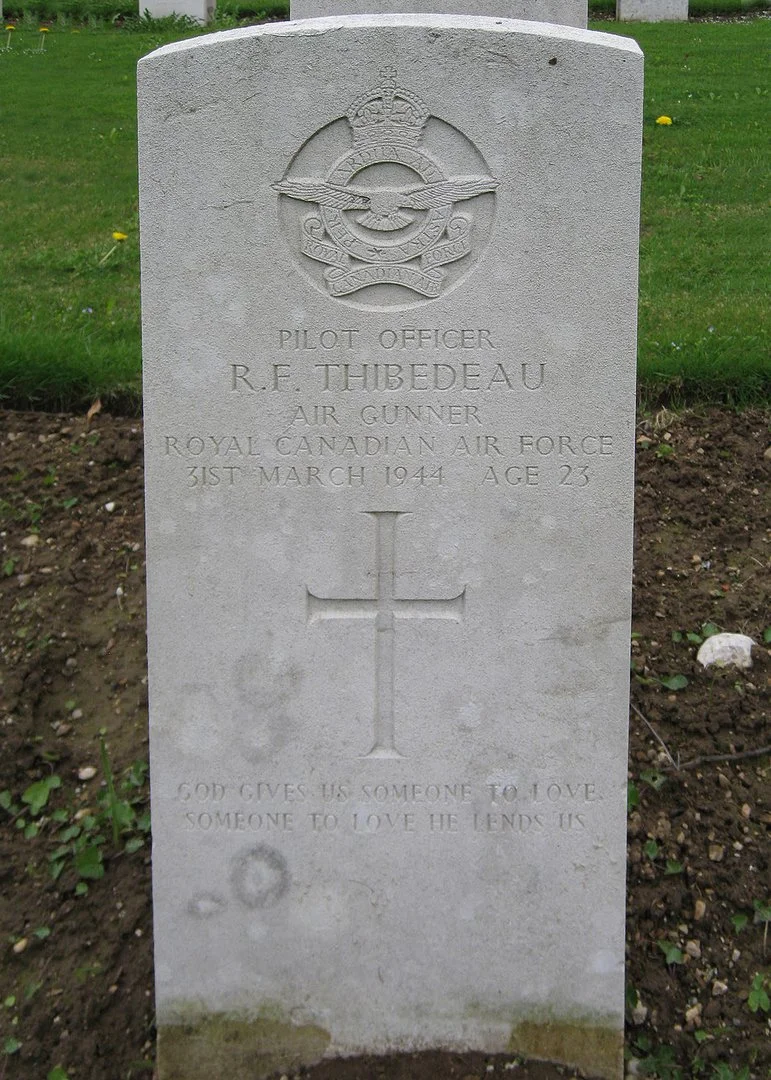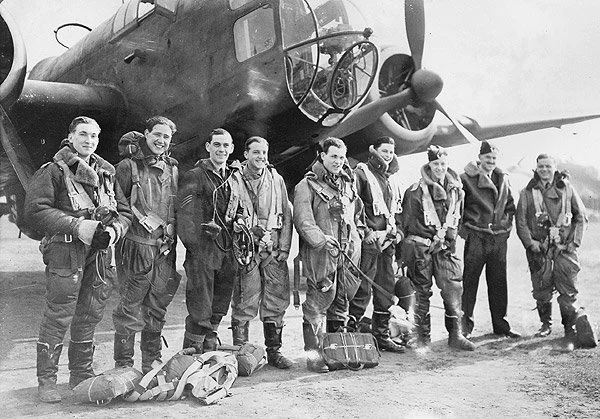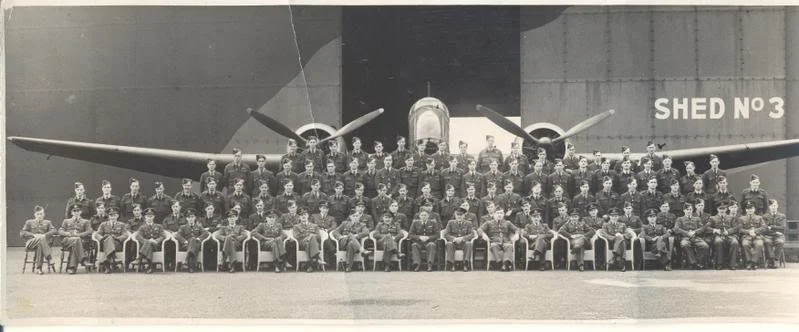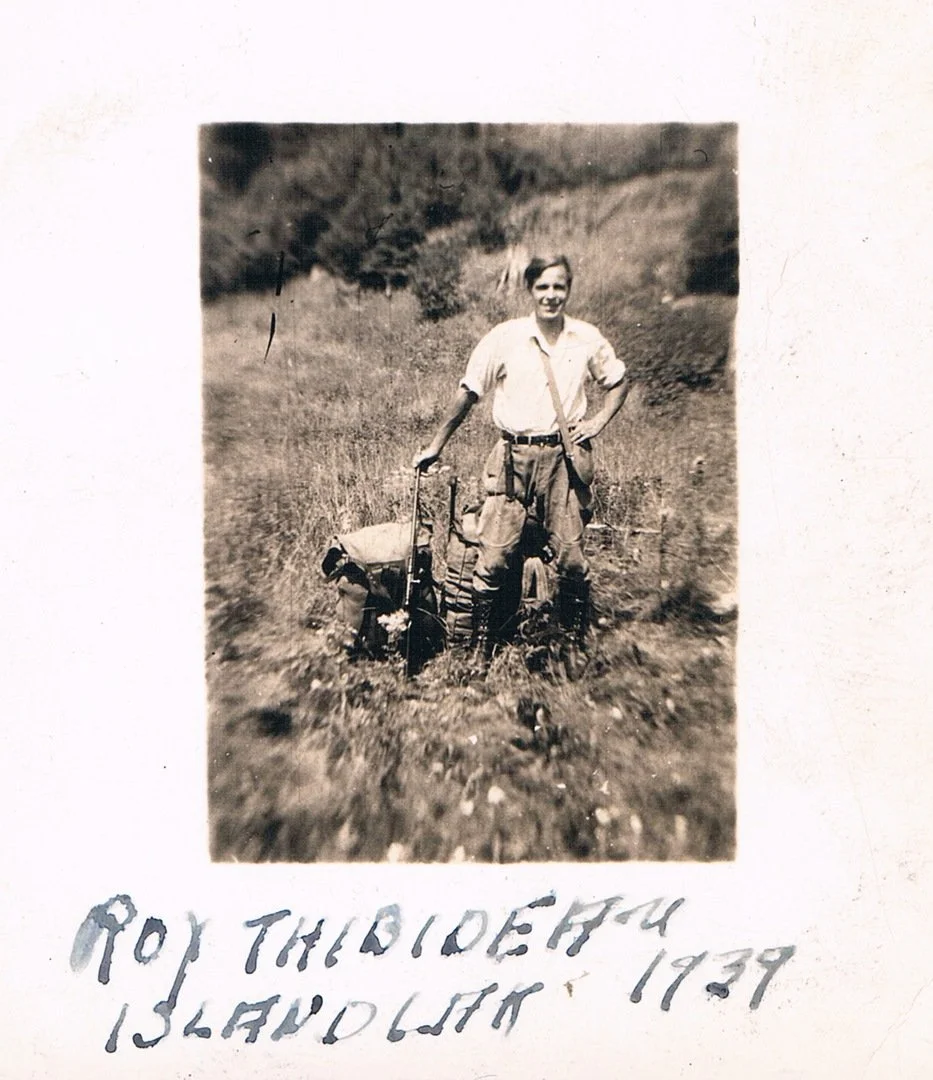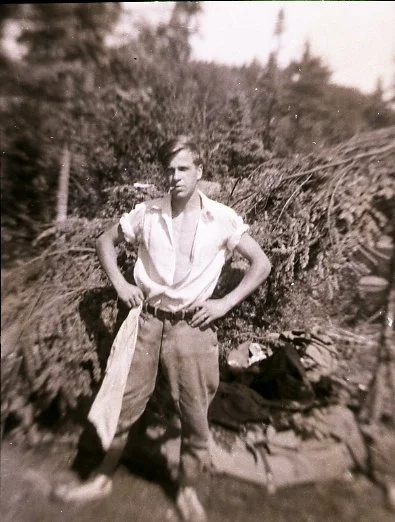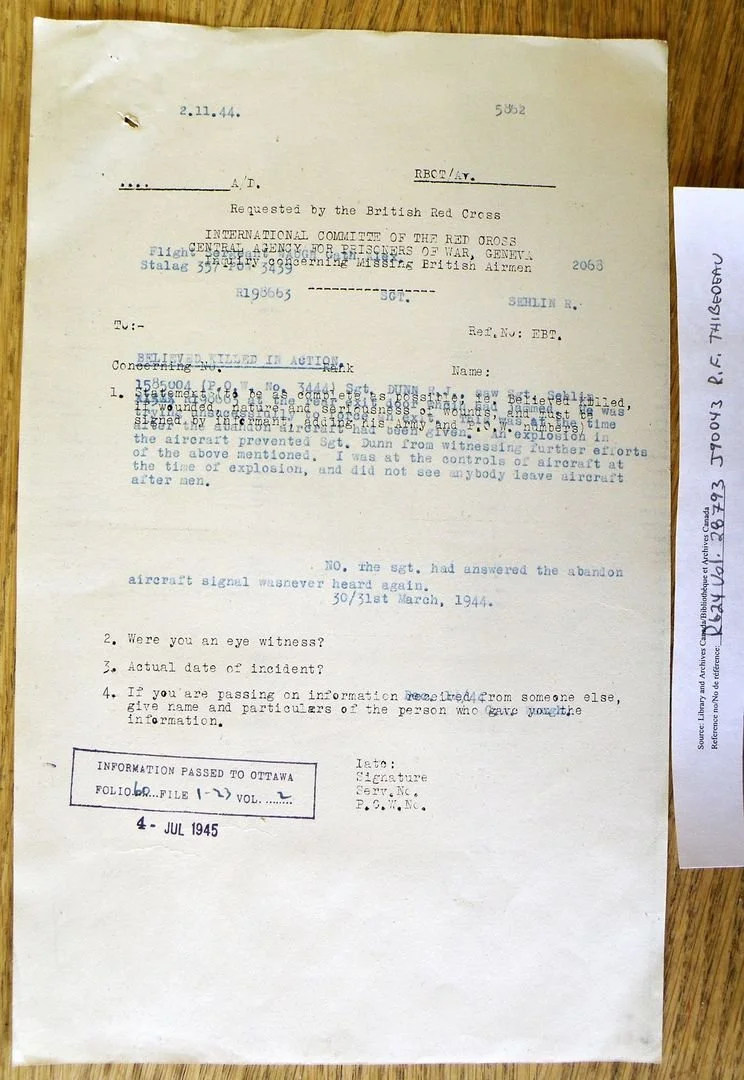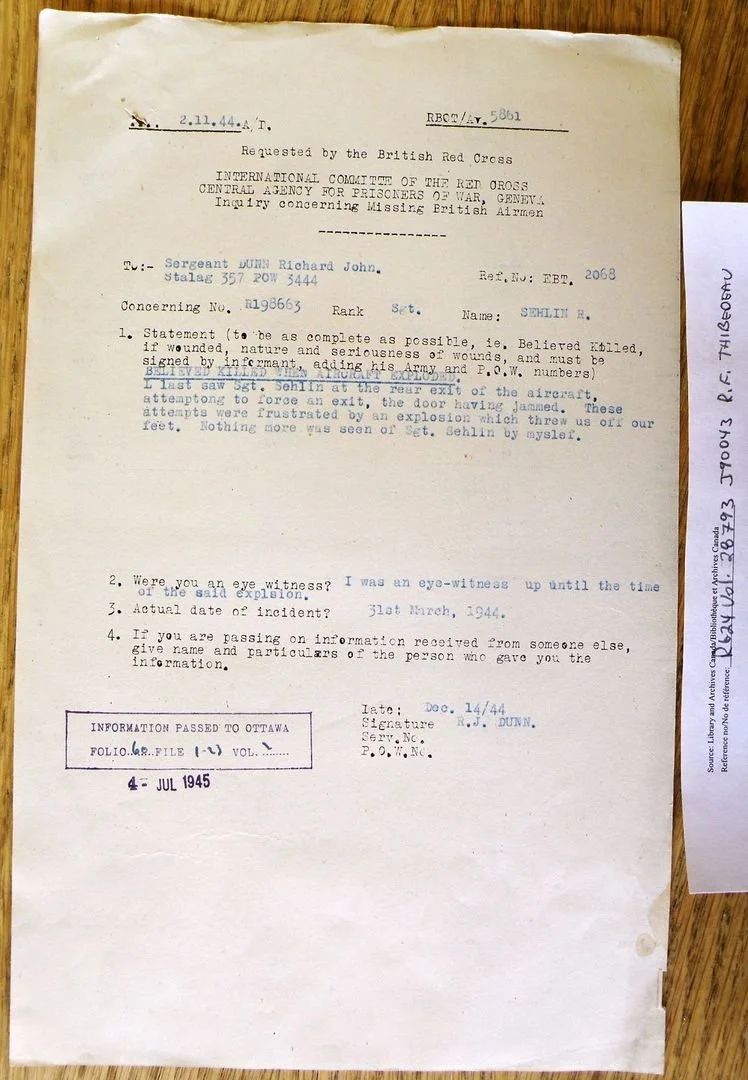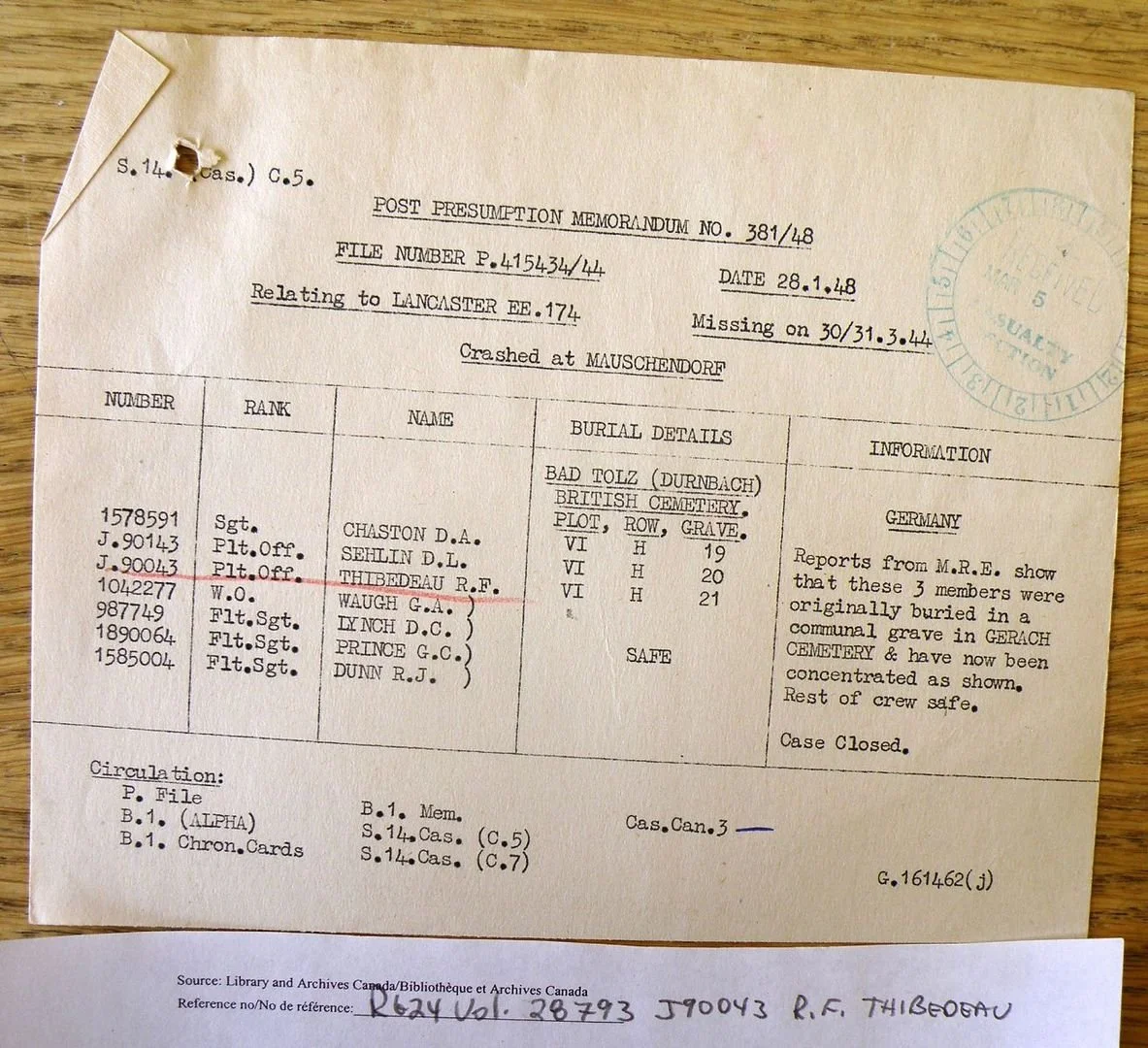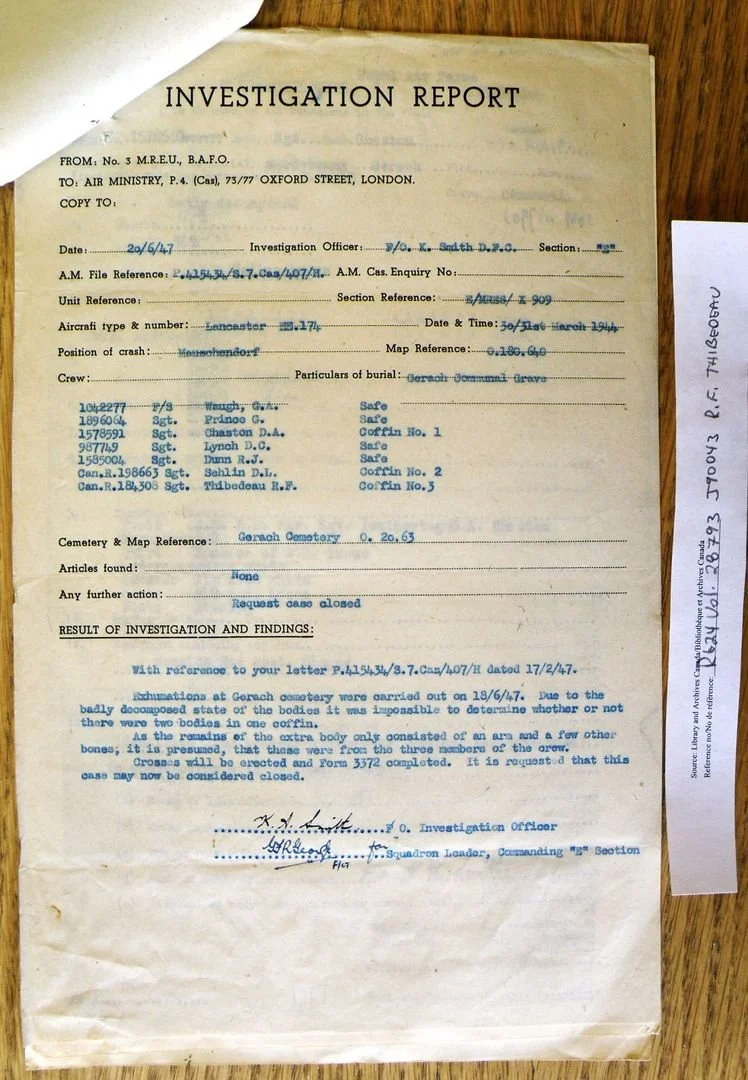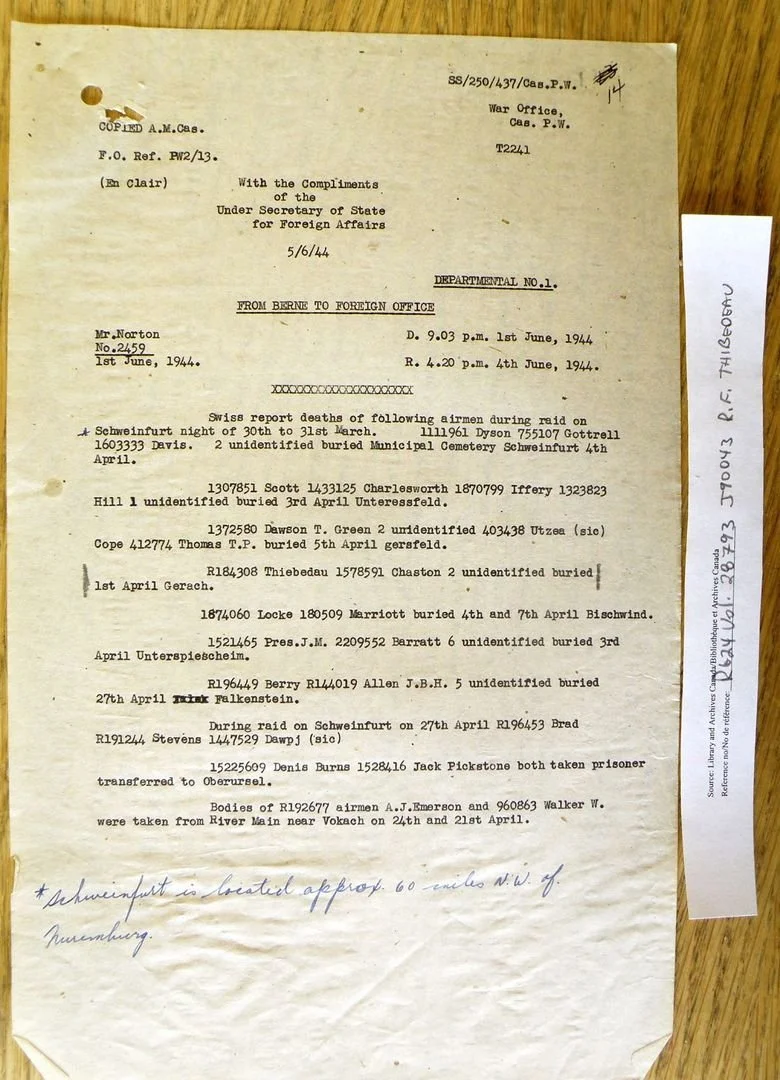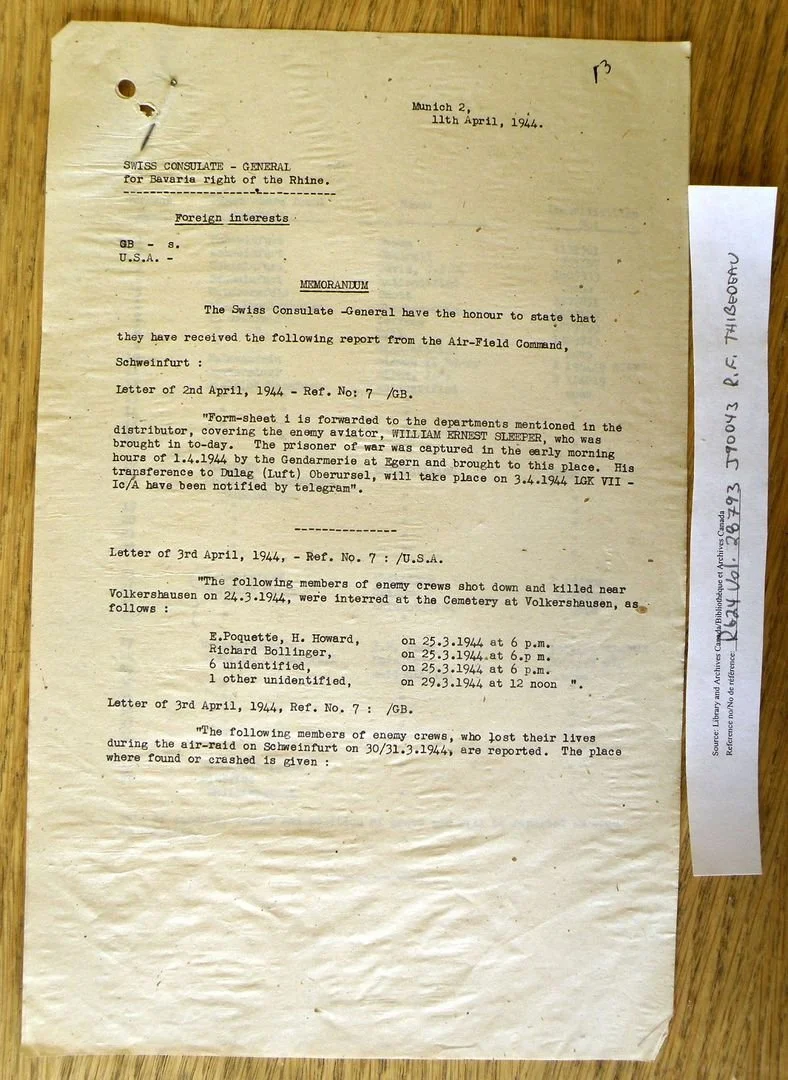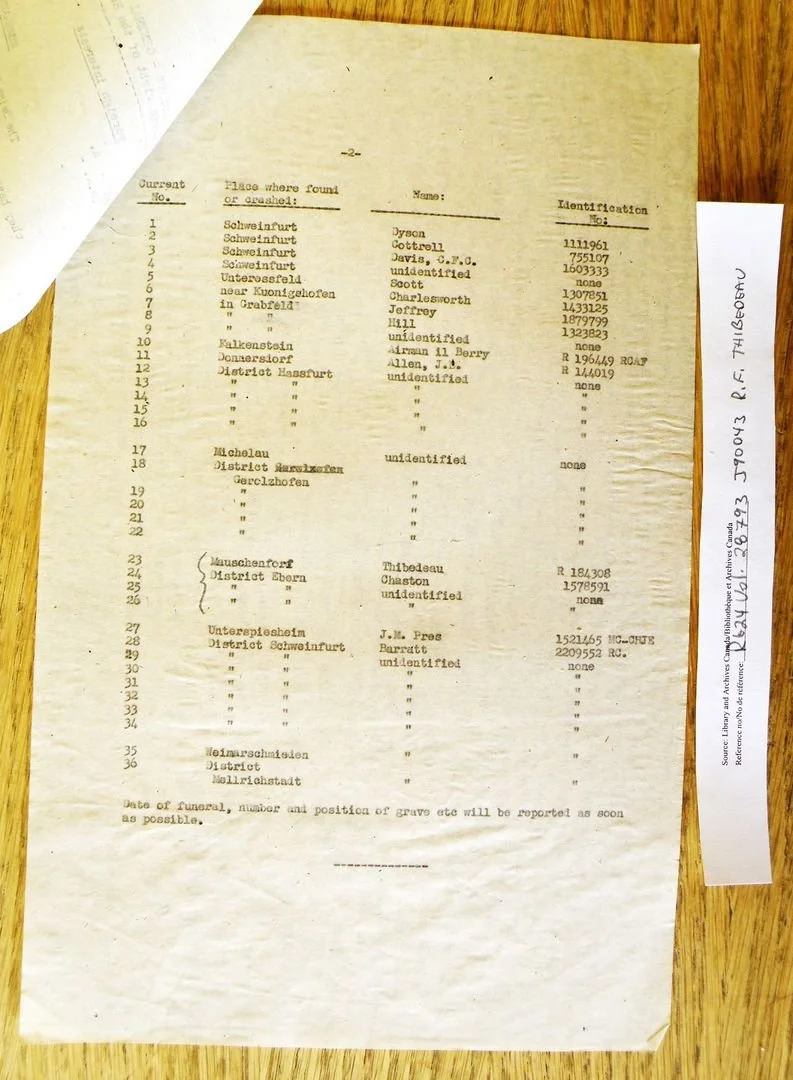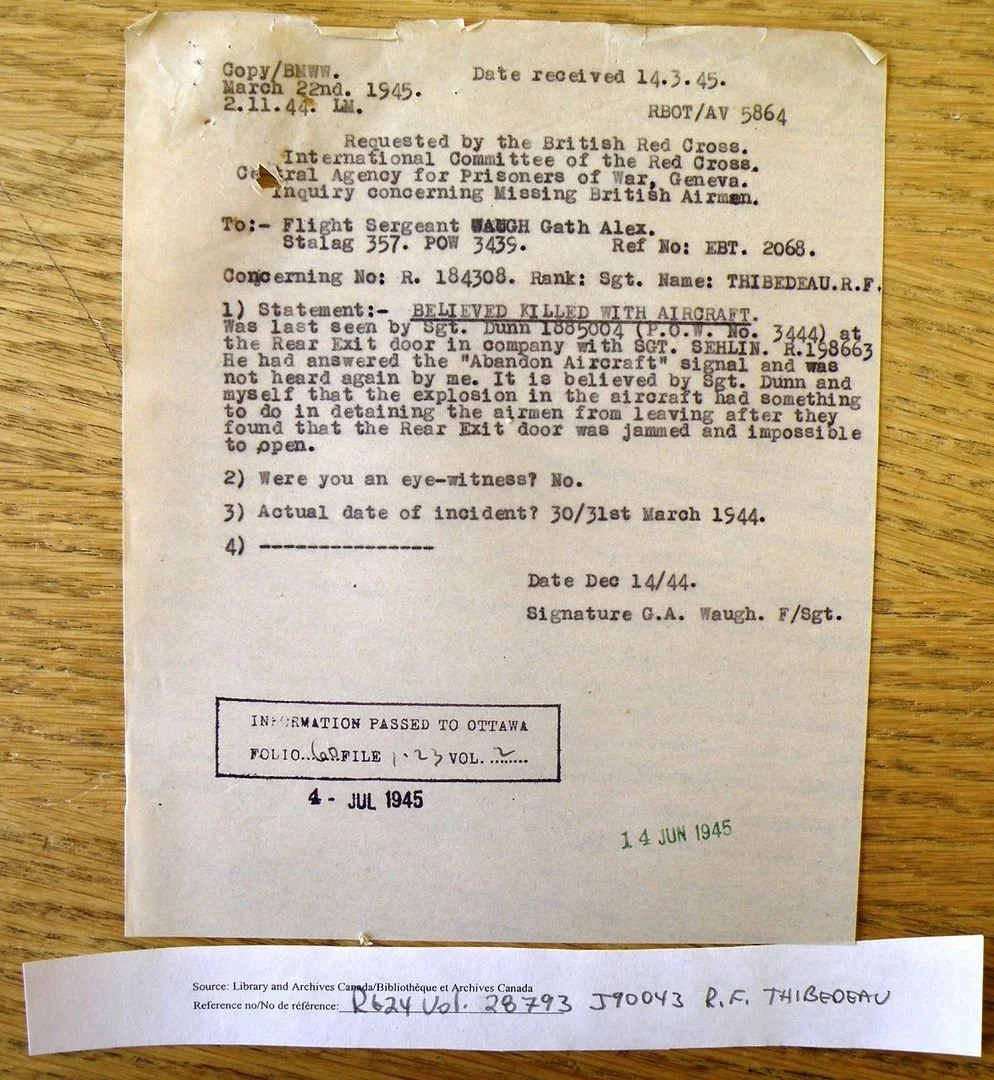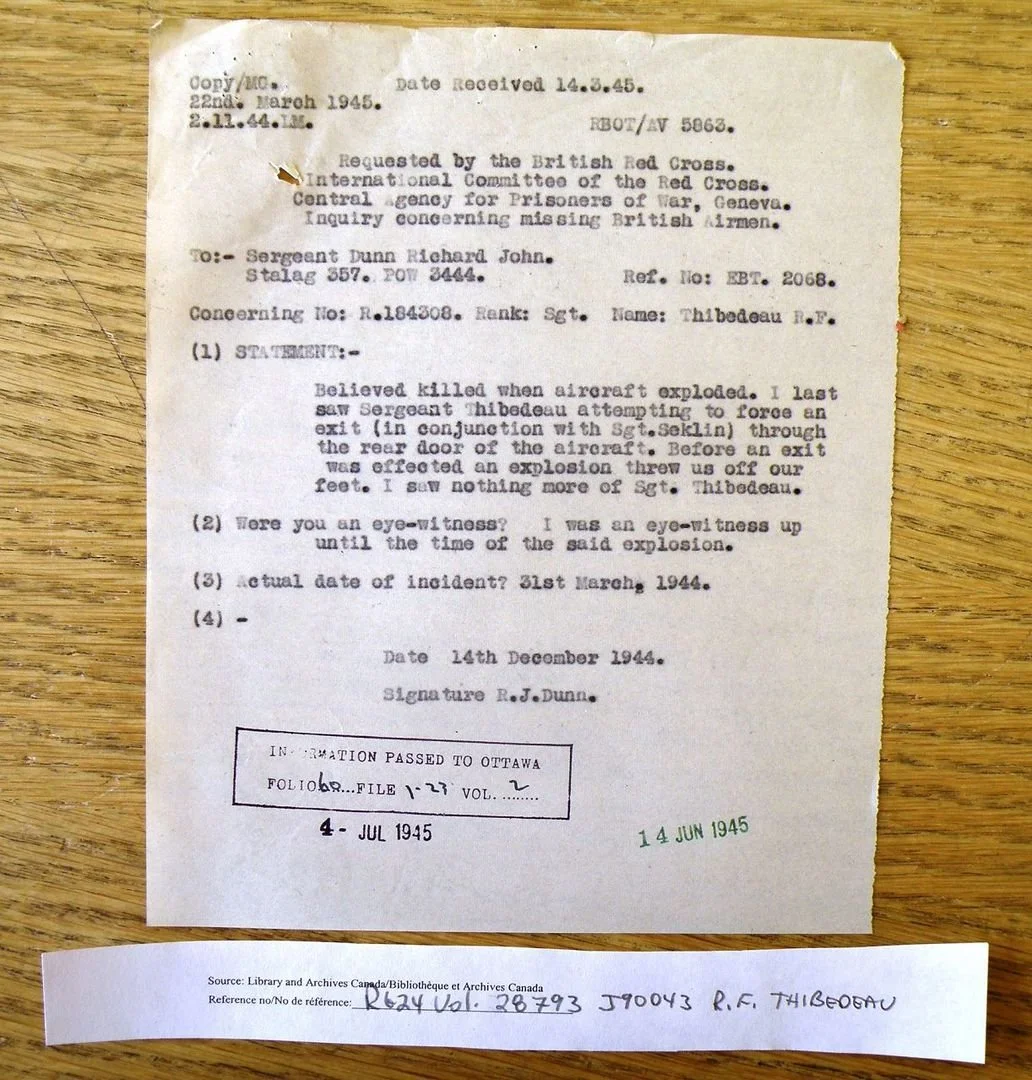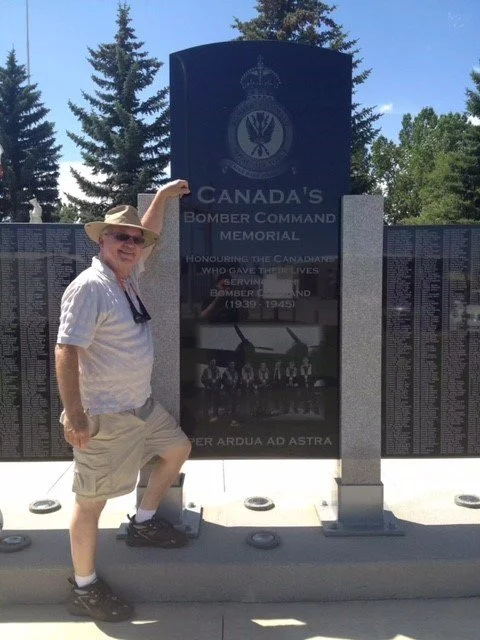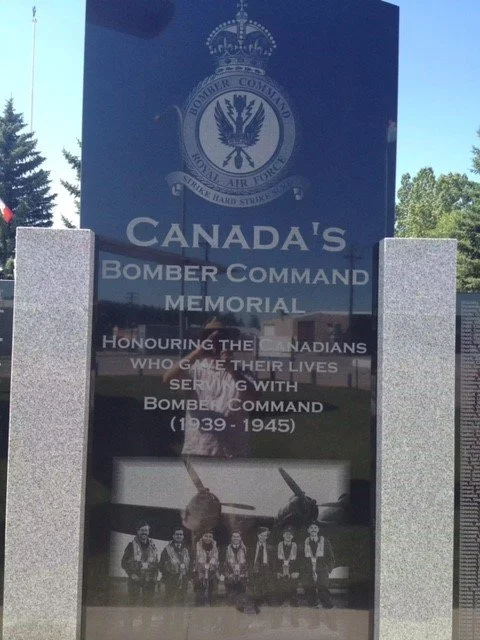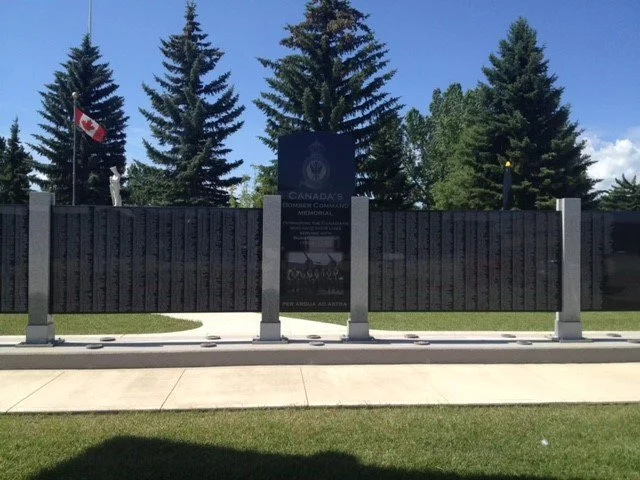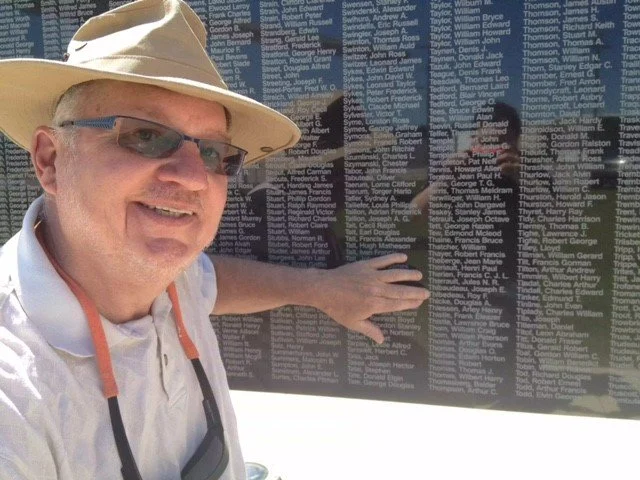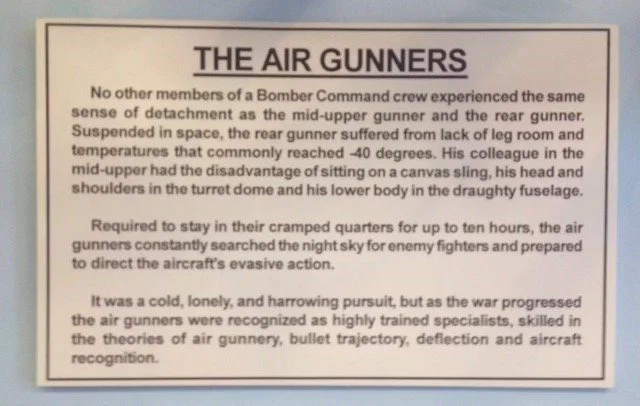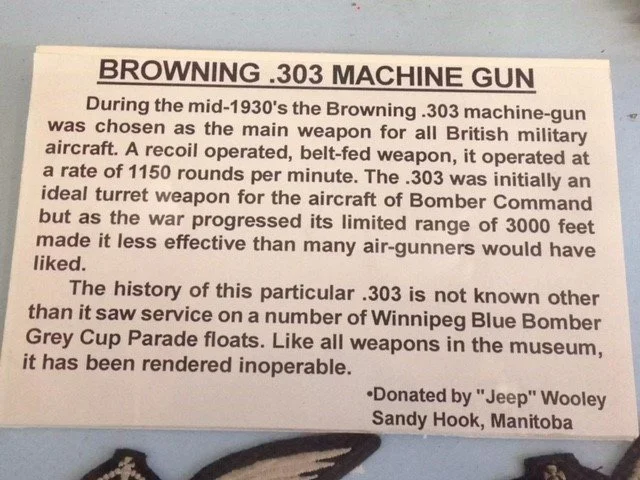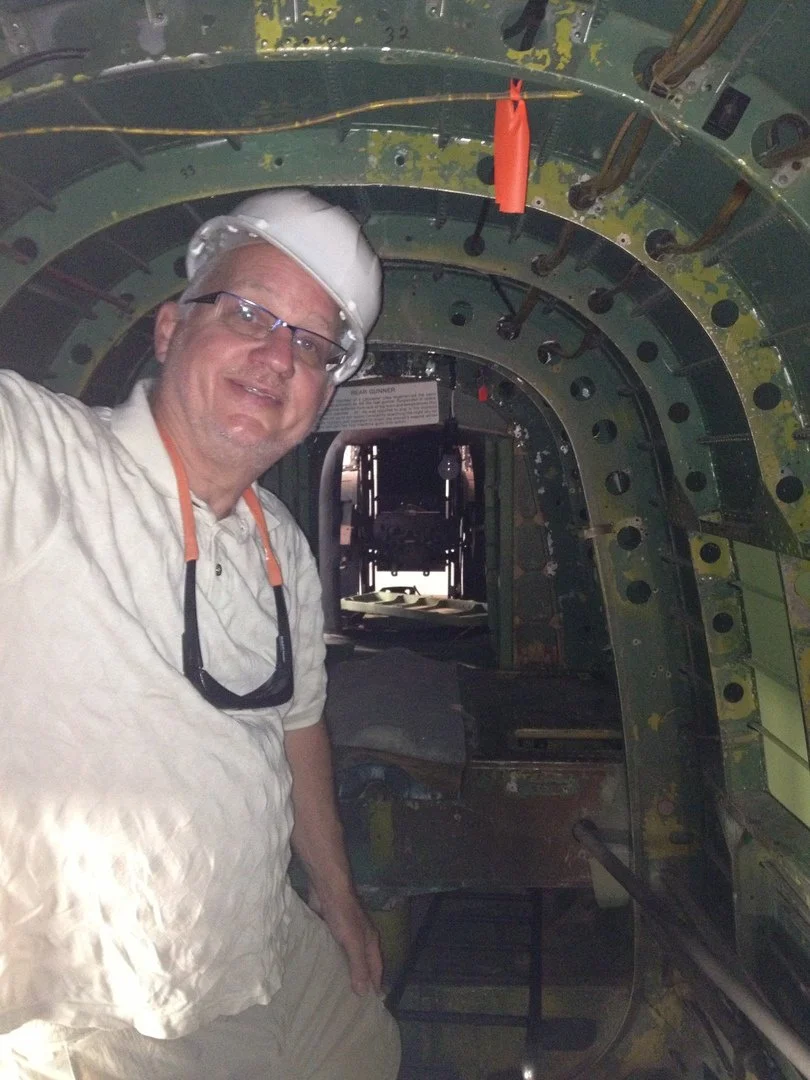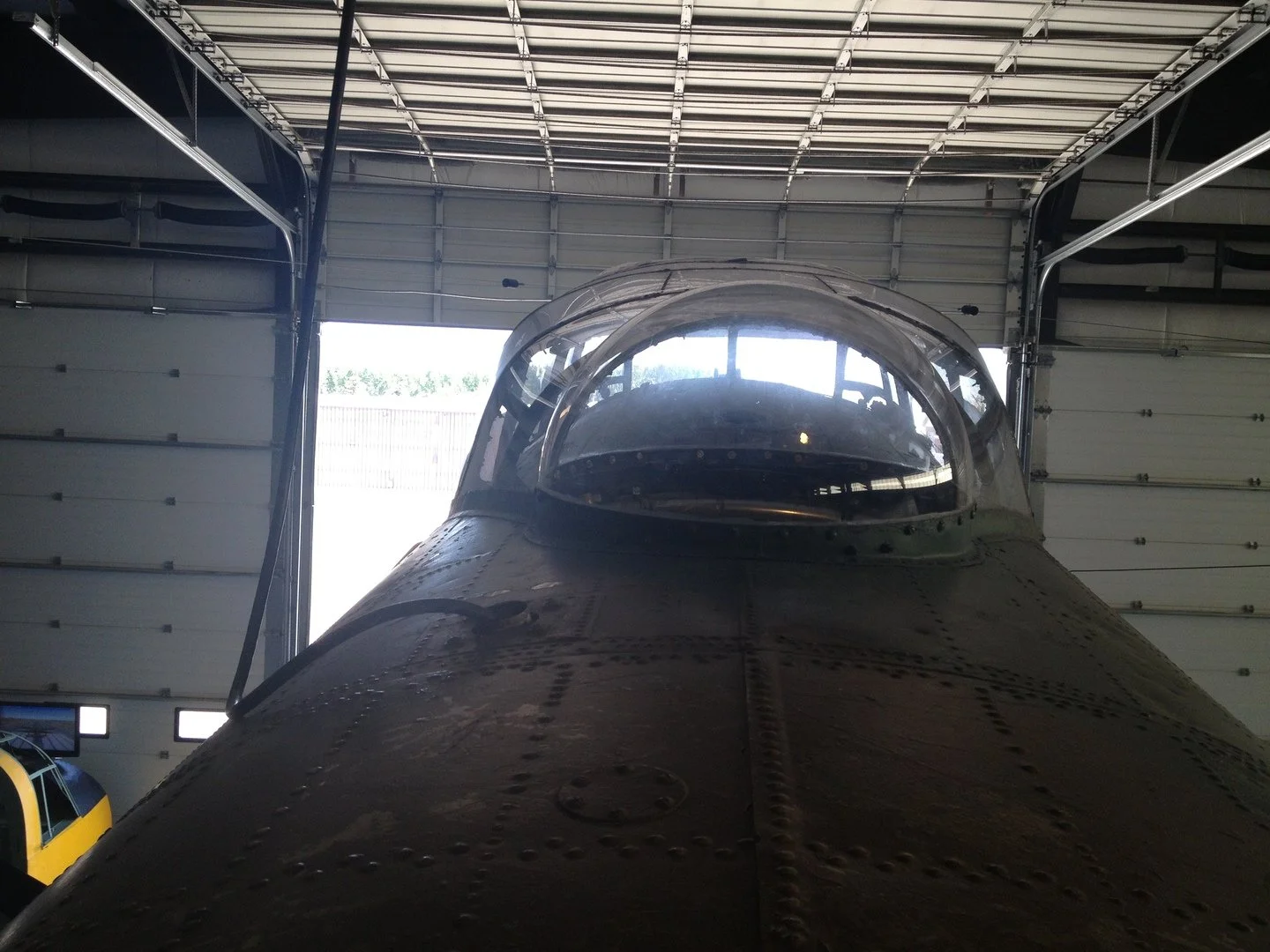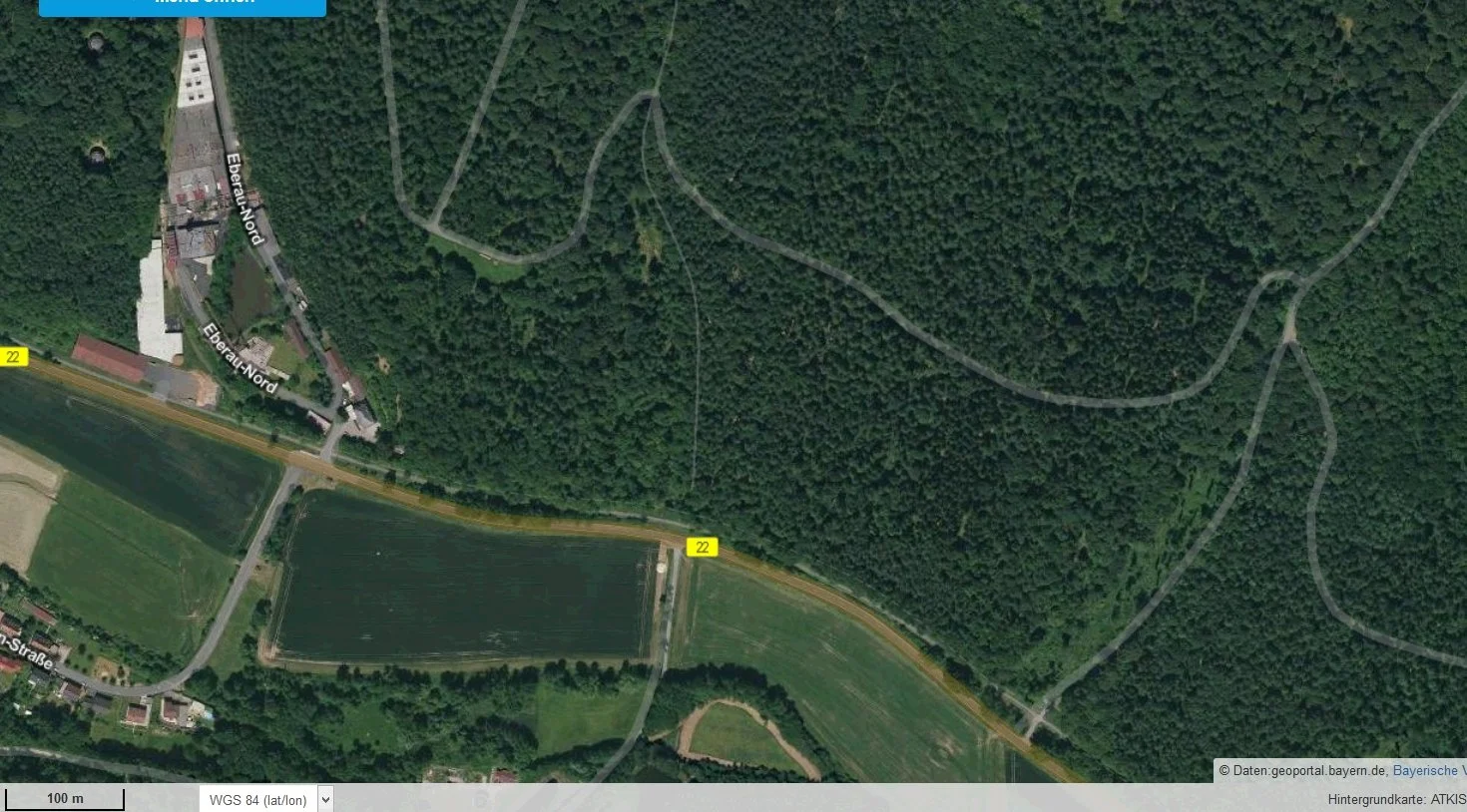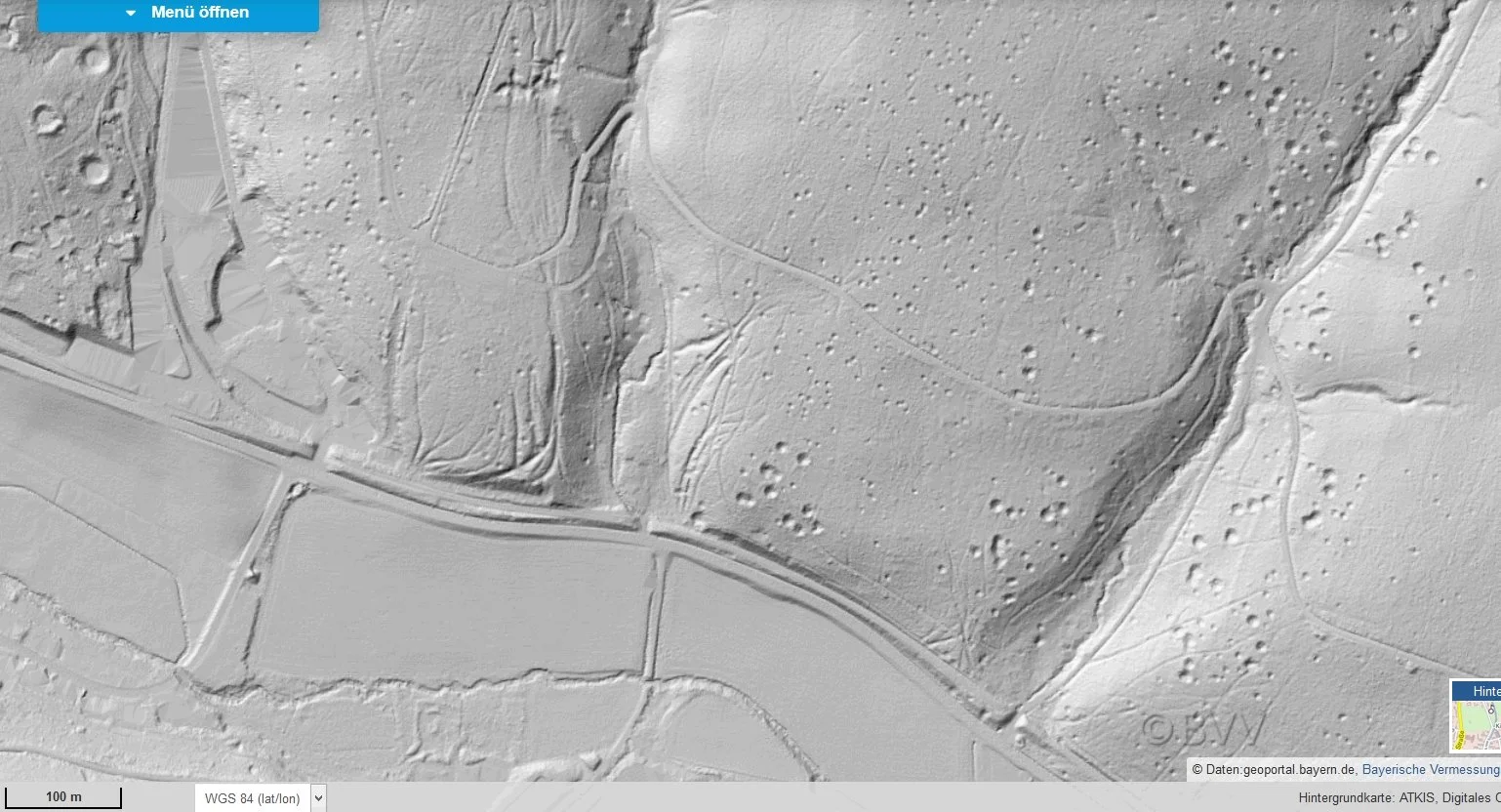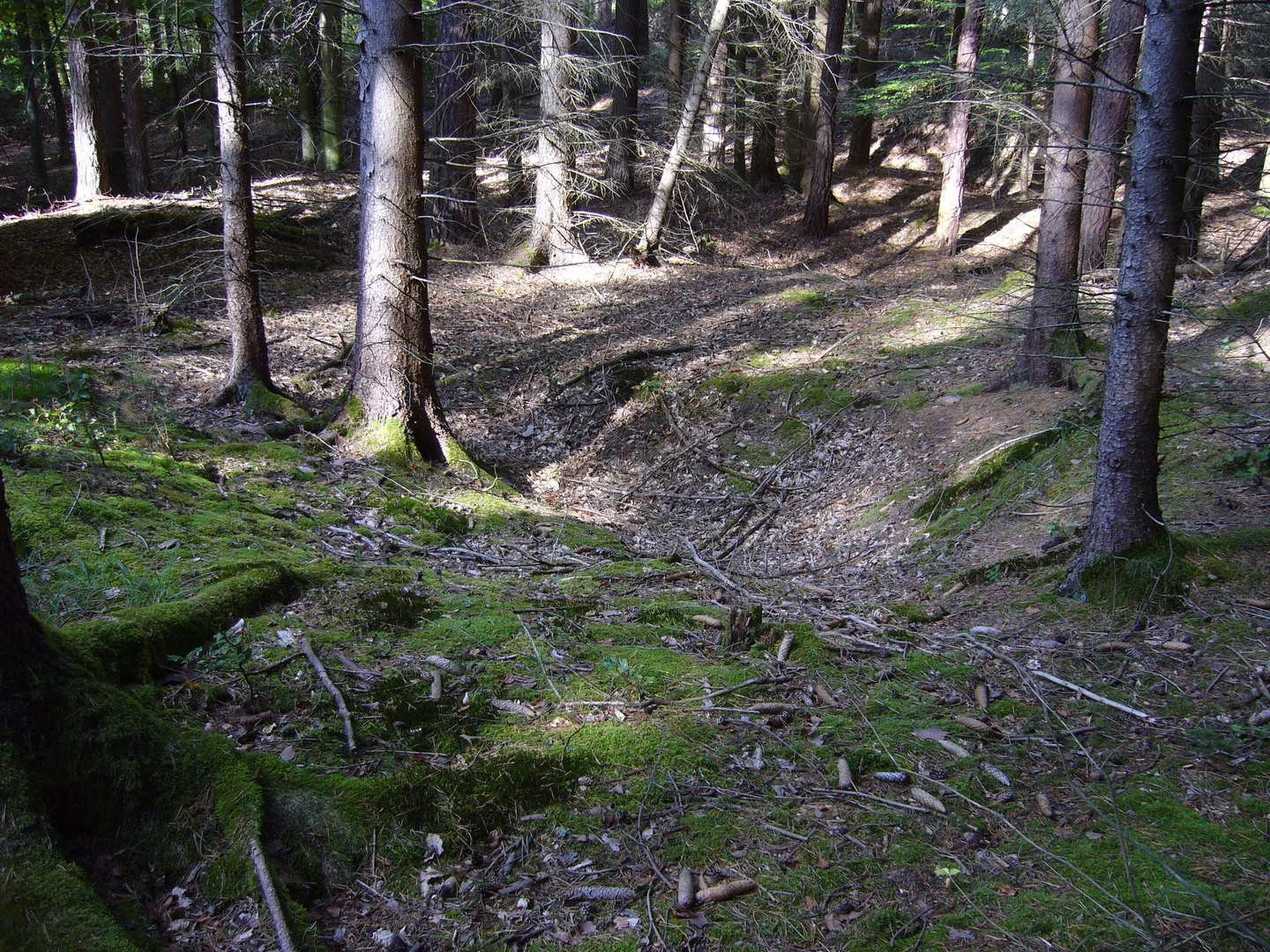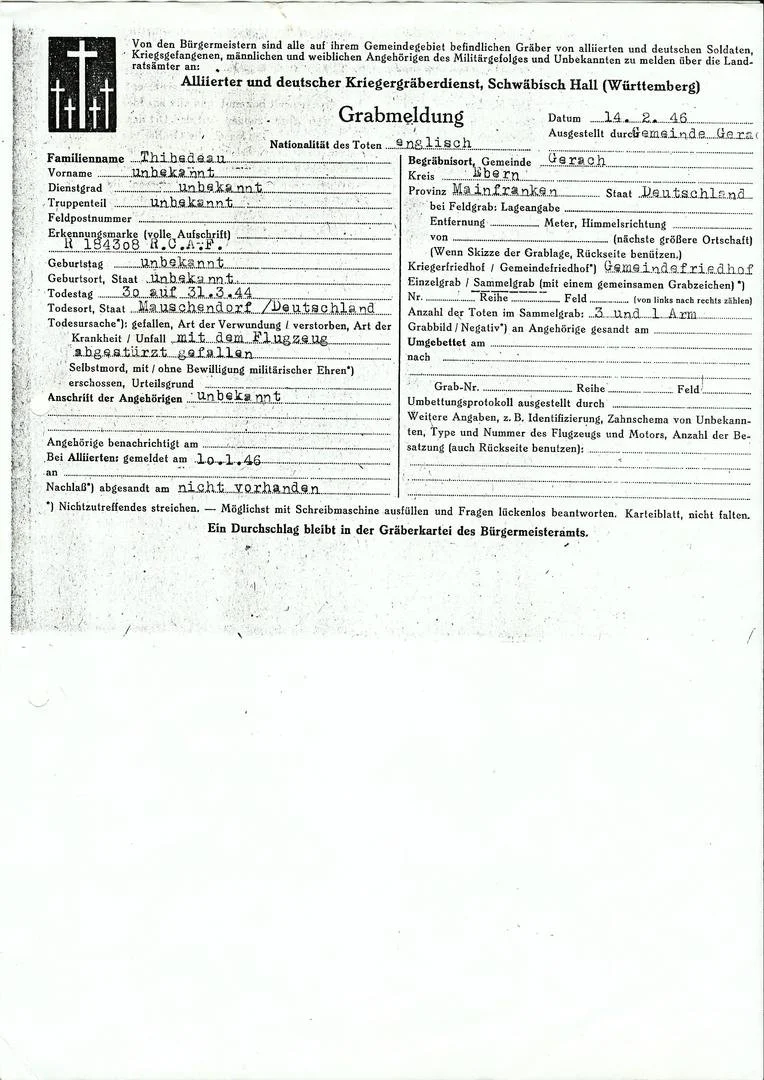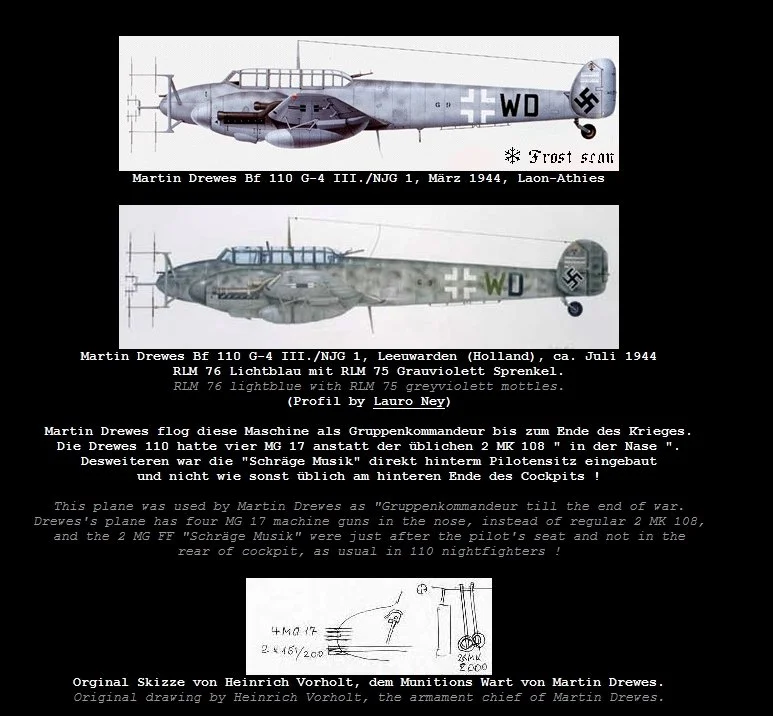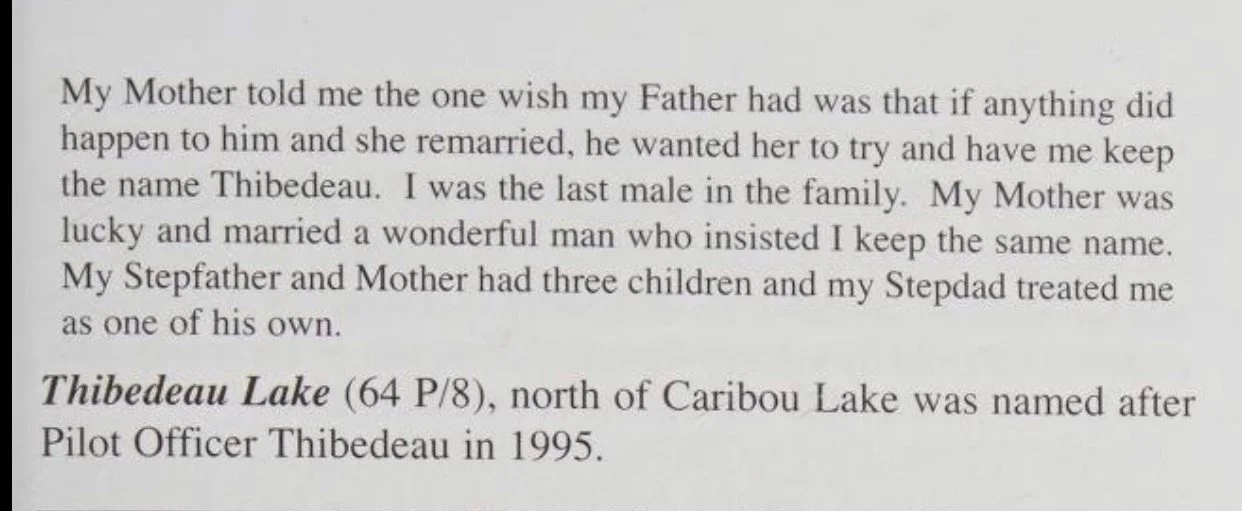Pilot Officer Roy Thibedeau
On March 30/31, 1944 Roy Thibedeau got into his turett as the rear gunner aboard a Lancaster leaving Skellingthorpe, England for Nuremberg, Germany. https://en.wikipedia.org/wiki/RAF_Skellingthorpe
The crew was on its 13th sortie and superstitious thoughts must have been in their mind.
For Roy and two others of the seven man crew, it was their last mission as their aircraft was shot down by a German nightfighter crashing near the village of Mauschendorf, Germany.
Map showing crash location and related points of interest:
Avro Lancaster III (EE174 VN-A) crash site
What happened that night will be documented here.
Onsite investigation conducted by Toni Schmidt, a retired German engineer who lives near the crash site, resulted in this website and him discovering each other on the internet researching the same event.
It's hoped plans can be put in place to produce and unveil a memorial plaque at the crash site with a representative of each family member in attendance.
The 75th anniversary of that night was 2019 marking what's been called the biggest single air mission of World War II, when Roy and two of his crew mates entered eternity. My uncle, Rear Gunner Sergeant Roy Frederick Thibedeau along with Mid Upper Gunner Sergeant Donald Leslie Sehlin of Millet, Alberta, and Navigator Sergeant Dennis Alfred (Chas) Chaston of Coventry, England made the ultimate sacrifice. Their four other crew mates were able to parachute and ultimately became prisoners of war. Remembering them and all the others who served.
A post on the Canadian Bomber Command Facebook honoured their sacrifice.
https://www.facebook.com/groups/112232095483062/
The above photo is from Back To Normandy website and is identified as,
"Avro Lancaster III (EE174 VN-A) on a mission to Nurnberg, Germany on 1944-03-01"
Another source indicates it may not be.
Regardless, it shows a Lancaster on its way to or from a mission with a dedicated flight crew.
The night fighter that attacked P/O Thibedeau’s aircraft EE174 VN-A. Here’s an excerpt taken from the losses database of the International Bomber Command Centre (IBCC): “Aircraft took off from Skellingthorpe at 2207 hrs detailed to attack targets in Nurnberg. The aircraft was shot down by a night fighter which came upon the Lancaster during its outbound journey. Aircraft claimed as probably shot down by Uffz Bruno Rupp of 4./NJG3 North of Bamburg at 0108 hrs”.
With thanks to IBBC Dave Gilbert, Losses Archivist IBBC remembers Roy Thibedeau
The IBCC Losses Archivist drew attention to the word ‘probably’ meaning sometimes the correct serial number of a downed aircraft was not noted.
In this instance, Rupp records this as his second claim of that night and his eighth to that date. The IBCC adds that he was 24 years of age and was flying a Schrage Musik equipped Ju 88. He survived the war having achieved 16 kills.
The other night fighter pilot in some sources reported as the one shooting down Lancaster EE174 VN-A, was Martin Drewes. IBBC reports, “… he made three claims on that night - LM376 or LM425 at 00:05, then W5006 at 00:50 and finally ND390 at 01:20, the latter being his 20th kill. He is not associated with EE174. ND390 and EE174 were both shot down north of Bamberg.” IBBC concludes that is probably where the confusion has arisen in the past.
International Bomber Command Centre
Nuremberg: The Blackest Night in RAF History, 30/31 March 1944 – Martin Bowman (this book contains details of that night; turn to page 68 to see the crew listed)
The crew of EE174 'A' Able Lancaster 50 Squadron
and
Pilot Flight Sergeant Garth Alex ‘Jimmy’ Waugh New Zealand
Navigator Sergeant Dennis Alfred (Chas) Chaston Coventry
https://losses.internationalbcc.co.uk/loss/104060/
Flight Engineer Sergeant George Prince New Malden, Surrey
Bomber Aimer Sergeant Denis C. ‘Jerry’ Lynch Buckinghamshire
Wireless Operator Sergeant R.J. ‘Jack’ Dunn Cornwall, Eng.
Mid Upper Gunner Sergeant Donald Leslie Sehlin Millet, Alberta
http://www.veterans.gc.ca/eng/remembrance/memorials/canadian-virtual-war-memorial/detail/2103068
Rear Gunner Sergeant Roy Frederick Thibedeau, Echo Bay/Sault Ste. Marie, ON, born in Manitoba
http://www.veterans.gc.ca/eng/remembrance/memorials/canadian-virtual-war-memorial/detail/2103296?Roy%20Frederick%20Thibedeau
The three who made the ultimate sacrifice that night were Chaston, Shelin and Thibedeau. Other crew members survived and were taken prisoner.
Mid Upper Gunner Sergeant Donald Leslie Sehlin
Have connected to Aircrew Remembered website, a rich source of infomation and very helpful when contacted. Here's how they describe their site:
The mission of this site is to record the stories of people connected with aviation, from wartime experiences - where young men and women were presented with extraordinary circumstances - to those in peacetime. We're interested in recording what we can of the lives of ordinary people doing ordinary things just as much as those of heroes doing unimaginable deeds.
If this is your first visit to our site: Welcome!
Another site full of information related to this research
Remembering....
First three photos from Canadian Bomber Command in Nanton, Alberta; bottom row, name on Memorial Wall in Memorial Gardens, Sault Ste. Marie, ON.; headstone from War Graves Commission; air force photo.
Roy's name is on this Manitoba plaque Powerview-Pine Falls War Memorial
The International Bomber Command (IBCC) offcially opened April 2018 at Canwick Hall, Lincoln, England.
Roy, and his fellow Bomber Command comarade and brother-in-law, Earl Bock's names appear there.
International Bomber Command Centre
Veterean James Flowers was a rear gunner in 50 Squadron and was interviewed by the British Broadcasting Corporatio
I inquired of the IBCC, could they ask Mr.Flowers if he recalled Roy Thibedeau, given they were in the same squadron and had the same crew position. His reply,"When I was on 50 Sqdn in 1945 there was many NZ's a few Aussies however I do not remember any Canadians."
Still, fascinating to have opportunity to ask someone who may have brushed shoulders with Roy.
(Appreciation to Sue Taylor, PA to the Chief Executive, International Bomber Command Centre, for her efforts in responding to my information requests.)




















These documents - some from German and from Red Cross records - were part of a journalist's research for a story on a crash site visit by crew member R.J. 'Jack" Dunn's son, Ian Dunn in March 2019. Materials kindly provided by our friend in Germany, Toni Schmidt who has spent time researching the crash site and forwarding information. The newspaper article is below these documents.
Canadian Bomber Command Museum
Nanton, Alberta.
Various photos of crash site findings as researched and compiled by Toni Schmidt
Exceptional variety: aircraft fragments, parts and ordinance discovered and detailed by Toni Schmidt.
Mauschendorf Funde komplett frpm Toni No[...]
Adobe Acrobat document [9.8 MB]
This note from Toni and these photos:
“I found out, that we have an interesting, government originated, map for Bavaria in the internet.
“In this map you can switch to different modes. Normal topographic, satelite, historic and relief view. And this last one is very interesting because it shows the landscape without vegetation. It shows the earth like a moon map. You can see each irregularity on the ground inside the woods. On the farmland everything is destroyed or flattened by the farmers, but in the forrests the earth remains as it was disturbed by human beings.
“You can switch by one click from one version to another. So I looked also for Mauschendorf and found, that there are a lot of craters besides the main craters that I knew up to now.
“I was there today to verify my finds and found easy three big craters north of the map, each about 7 to 10 meters in diameter and about 2 meters depth. Two of these are perfect round bomb craters, the third one lookes more oblong.
“I had lots of signals of my detector but I dug out only a few large aluminum metal sheets and one 0.303 Browning shell that exploded at the crash. "
Crash site ....
(map here) Crater;pieces of aircraft; crash report; aerial of location; nightfighter aircraft of the type involved in this battle; church grave yard, site of original burial before interment in military cemetery. (credit to German citizen, Toni Schmidt who has been kind enough to do and share crash site research and photography)
Durnbach Cemetery
Memorial Certificate
From Canadian Virtual Memorial online service
THIBEDEAU_ROY_FREDERICK memorial certifi[...]
Adobe Acrobat document [1.9 MB]
Pilot Officer ROY FREDERICK THIBEDEAU
died on March 31, 1944
Service Number: J/90043
Age: 23
Force: Air Force
Unit: Royal Canadian Air Force
Division: 50 (R.A.F.) Sqdn
Cemetery:
DURNBACH WAR CEMETERY
Germany
[CLICK HERE FOR CEMETERY]
Grave Reference: 6. H. 21.
Canadian Virtual Memorial
Location: Durnbach is a village 16 kilometres east of Bad Tolz, a town 48 kilometres south of Munich. Durnbach War Cemetery is 3 kilometres north of the village Gmund am Tegernsee. Using the A8 from Munich, turn off at the junction Holzkirchen, taking the 318 road in the direction of Gmund am Tegernsee. At the crossroads with the 472, turn left in the direction of Miesbach. The cemetery is situated approximately 500 metres on the left from the 318/472 crossroads.
Lancaster details Avro Lancaster: The Night Raider
Canadian Virtual War Memorial Roy Frederick Thibedeau - The Canadian Virtual War Memorial - Veterans Affairs Canada
Topographical map from Manitoba Government showing Caribou Lake Provincial Park, site of Thibedeau Lake and other features named in honour of those making the ultimate sacrifice
The Manitoba naming project is known by some this way.....
… that outlines names of those first honoured with a Manitoba Lake named in their memory. Roy’s lake was named later so he’s not in this initial group but, in reviewing the list, there are connections to him.
RCAF Flying Officer Joseph Lloyd Dobbyn, DFC, a pilot attached to 50 Squadron, Royal Air Force - Roy’s squadron.
Flying Officer Dobbyn was killed along with his entire crew of 50 Squadron Lancaster DV384 when they were attacked by night fighters on the night of 22–23 March 1944. This was just a week before Roy’s last flight. Roy and his crew mates would have at least known Dobbyn and his crew or maybe been best friends, we’ll never know. Either way, Roy and others in 50 Squadron would’ve mourned the loss.
—
A lake is dedicated to the memory of 22-year-old Flying Officer James Craig, DFC, a bomb aimer with 97 Squadron, a Pathfinder unit of the Royal Air Force. On the night of 30–31 March 1944, fourteen Lancasters and their crews from 97 Squadron were detailed to participate in an attack on the city of Nuremburg. Craig and his crew were on the same mission as Roy whose 50 Squadron Lancaster was among the hundreds of bombers on that raid. RAF suffered its worst night ever, losing 106 Bombers and 545 men on that Nuremberg mission.
Researching the above lead me to, A Place of Honour. The Program’s website explains: “This publication is dedicated to the families of those Manitobans who lost a loved one as a casualty of war. Our Province has recognized their sacrifice in the commemorative naming of more than 4,200 lakes, islands, bays and other geographical features after them.
https://archive.org/details/placeofhonourman0000unse/page/n5/mode/1up
Roy's entry is below, written by his son Vern:
Used with permission, this photo from the 2024 Quinte International Air Show (QIAS) at 8 Wing Trenton, Ontario is by Errol Caldwell, well known and respected artisan and photographer in Laird Township, Ontario. He creates one of a kind artistic as well as functional woodturnings and other wood products. His photography and related custom work are also highly regarded. His website:
The Turning Point Woodworking and Photography
More on Errol in this 2022 news item: Errol Caldwell: From scientist to social activist, artist - Sault Ste. Marie News (sootoday.com)
This famous Lancaster is based at Canadian Warplane Heritage Museum, Hamilton International Airport. It’s image reminds us of the power and majesty of the bomber aircraft and the bravery of Bomber Command crews.
“The Lancaster Mk. X was built at Victory Aircraft, Malton in July 1945 and was later converted to a RCAF 10MR configuration. In 1952, it suffered a serious accident and received a replacement wing centre section from a Lancaster that had flown in combat over Germany. It served as a maritime patrol aircraft, with No. 405 Squadron, Greenwood, NS and No. 107 Rescue Unit, Torbay, Newfoundland for many years and was retired from the RCAF in late 1963. With help from the Sulley Foundation in 1977, it was acquired from the Royal Canadian Legion in Goderich, Ontario, where it had been on outside display. Eleven years passed before it was completely restored and flew again on September 24, 1988. The Lancaster is dedicated to the memory of P/O Andrew Mynarski and is referred to as the “Mynarski Memorial Lancaster”. It is painted in the colours of his aircraft KB726 – VR-A, which flew with RCAF No. 419 "Moose" Squadron. Andrew Mynarski won the Victoria Cross, the Commonwealth’s highest award for gallantry, on June 13, 1944, when his Lancaster was shot down in flames, by a German night fighter. As the bomber fell, he attempted to free the tail gunner trapped in the rear turret of the blazing and out of control aircraft. The tail gunner miraculously survived the crash and lived to tell the story, but sadly Andrew Mynarski died from his severe burns.”
Above from Canadian Warplane Heritage Museum - Canadian Aviation History | Wartime Vintage Aircraft


